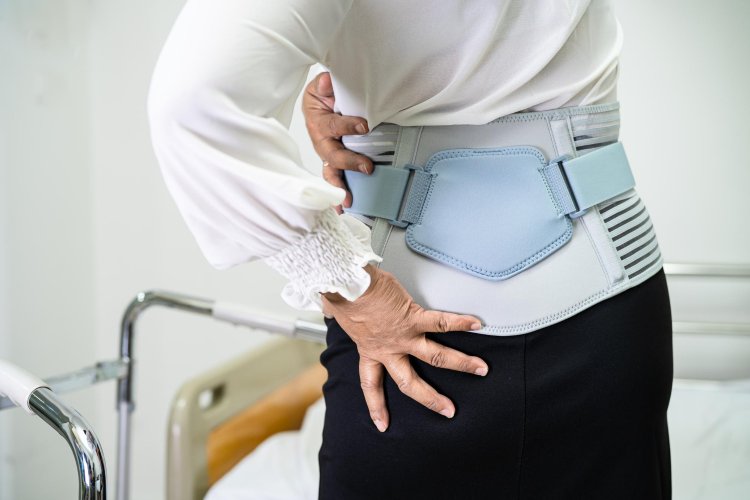Steps to Recovery: A Comprehensive Guide to Hip Fracture Management in the Elderly
Hip fractures are a critical public health issue, particularly among the elderly. These injuries can lead to severe consequences, including prolonged disability, reduced quality of life, and increased mortality. As the global population ages, the incidence of geriatric hip fractures is anticipated to rise, underscoring the need for comprehensive understanding and effective strategies for prevention, management, and rehabilitation.

Epidemiology and Risk Factors
Hip fractures predominantly affect individuals over the age of 65, with women being at higher risk due to higher prevalence of osteoporosis. Key risk factors include:
Age
Advancing age is a primary risk factor due to the natural decline in bone density and muscle mass.
Gender
Women are more susceptible, especially post-menopause, due to decreased estrogen levels that affect bone density.
Genetics
Family history of osteoporosis or fractures increases susceptibility.
Lifestyle Factors
Sedentary lifestyle, smoking, and excessive alcohol consumption can negatively impact bone health.
Chronic Conditions
Diseases such as Parkinson’s, diabetes, and rheumatoid arthritis, as well as conditions causing poor vision or balance, elevate the risk.
Pathophysiology of Hip Fractures
Bone Quality
Osteoporosis is characterized by reduced bone mass and microarchitectural deterioration, making bones more fragile.
Falls
The majority of hip fractures result from falls. The biomechanics of falling, such as the direction and force of impact, influence fracture patterns.
Bone Geometry
Certain anatomical features, like a narrower femoral neck or higher hip axis length, can predispose individuals to fractures.
Types of Hip Fractures
Femoral Neck Fractures
Occur within 1-2 inches of the hip joint. These can disrupt blood supply to the femoral head, potentially leading to avascular necrosis.
Intertrochanteric Fractures
Occur between the greater and lesser trochanters. They typically have a better blood supply and thus a better healing prognosis compared to femoral neck fractures.
Subtrochanteric Fractures
Occur below the lesser trochanter and can extend down the femoral shaft, often necessitating complex surgical interventions.
Diagnosis
Clinical Assessment
Includes patient history, physical examination focusing on pain, limb positioning, and mobility.
Imaging
X-rays: Primary tool for confirming fractures and planning treatment.
MRI or CT Scans: Used when X-rays are inconclusive or to assess complex fracture patterns.
Management Strategies
Preoperative Care
Stabilization: Addressing any acute medical conditions to optimize patient status for surgery.
Pain Management: Use of analgesics or regional anesthesia to manage severe pain.
Surgical Treatment Options
Internal Fixation: Suitable for stable fractures. Involves screws, plates, or rods to stabilize the bone.
Hemiarthroplasty: Replacement of the femoral head with a prosthesis, often used for displaced femoral neck fractures.
Total Hip Arthroplasty: Both the femoral head and acetabulum are replaced. Recommended for patients with pre-existing hip disease or when long-term outcomes are considered.
Postoperative Care
Pain Management: Continued use of analgesics, regional blocks, or patient-controlled analgesia (PCA).
Complication Prevention: Measures to prevent deep vein thrombosis (DVT), pulmonary embolism, and infections. Prophylactic antibiotics and anticoagulants are commonly used.
Nutritional Support: Ensuring adequate nutrition to support healing and recovery, including protein and calcium-rich diets.
Rehabilitation
Early Mobilization: Encouraged within 24-48 hours post-surgery to prevent complications such as pneumonia, DVT, and pressure sores.
Physical Therapy: Focuses on restoring mobility, strength, and balance. Includes exercises, gait training, and use of assistive devices as needed.
Occupational Therapy: Helps patients adapt to any limitations and regain independence in daily activities.
Prevention Strategies
Fall Prevention
Home Safety Modifications: Removing tripping hazards, installing grab bars, improving lighting, and using non-slip mats.
Exercise Programs: Balance and strength training exercises, such as Tai Chi, to improve stability and reduce fall risk.
Vision Care: Regular eye exams and appropriate corrective measures to address vision impairments.
Bone Health Maintenance
Nutrition: Adequate intake of calcium and vitamin D through diet or supplements. Foods rich in these nutrients include dairy products, leafy greens, and fortified foods.
Medications: Bisphosphonates, selective estrogen receptor modulators (SERMs), and other medications to treat osteoporosis and enhance bone density.
Lifestyle Changes: Encouraging weight-bearing exercises, smoking cessation, and limiting alcohol consumption.
Regular Health Checkups: Monitoring and managing chronic conditions, reviewing medications that may contribute to fall risk, and ensuring overall health optimization.
Long-Term Outcomes and Quality of Life
Functional Recovery
Varies widely; many patients do not regain pre-fracture levels of function and independence.
Psychological Impact
Hip fractures can lead to depression, anxiety, and reduced quality of life. Psychological support and counseling may be beneficial.
Mortality
Increased mortality rates are observed, particularly within the first year post-fracture. Comprehensive care and rehabilitation can help mitigate this risk.
Geriatric hip fractures represent a significant challenge in elderly care due to their complex nature and profound impact on patients' lives. Effective management requires a multidisciplinary approach involving prompt surgical intervention, comprehensive postoperative care, and dedicated rehabilitation efforts. Preventive strategies, including fall prevention and bone health maintenance, are crucial in reducing the incidence of these fractures. As the aging population grows, focused efforts on improving outcomes for hip fracture patients are essential to enhance their quality of life and reduce healthcare burdens.
Disclaimer
The information provided in this article is for educational purposes only and should not be considered medical advice. If you have any health concerns or are experiencing symptoms, it is important to consult with a healthcare professional, such as a doctor or clinic, for proper diagnosis and treatment. Always seek the advice of your doctor or other qualified health provider with any questions you may have regarding a medical condition. Do not disregard professional medical advice or delay in seeking it because of something you have read in this article.
Hashtags
#Health #HipFractures #Geriatrics #BoneHealth #FallPrevention #Rehabilitation #MedicalAdvice
What's Your Reaction?





















